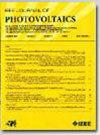基于加权特征融合的光伏组件热成像故障诊断集成CNN框架
IF 2.6
3区 工程技术
Q3 ENERGY & FUELS
引用次数: 0
摘要
全球光伏(PV)能源采用的增加凸显了在环境变化和故障中保持系统效率的必要性。识别、分类和纠正缺陷的过程对于确保光伏装置的长期可持续性和性能完整性至关重要。本文介绍了一种创新的集成卷积神经网络(CNN)模型,该模型采用加权特征融合来提高准确度,超出了单一CNN架构所能达到的精度。通过使用三个熟练的cnn - vgg16, ResNet和mobilenet -从这些网络的最后一层提取的深度特征融合增强了性能,同时也利用了来自不同配置的多个cnn的数据集成。该方法应用于一个公开可用的红外热成像数据集,其中包括12个不同的缺陷。提出的模型随后在该数据集上进行了训练、验证和测试。结果表明,与单个CNN模型相比,缺陷分类的准确率有了显著提高,平均准确率为96%。这种方法强调了它在缺陷识别中的实用性,特别是展示了集成CNN对缺陷进行高精度分类的能力本文章由计算机程序翻译,如有差异,请以英文原文为准。
A Novel Ensemble CNN Framework With Weighted Feature Fusion for Fault Diagnosis of Photovoltaic Modules Using Thermography Images
The global increase in the adoption of photovoltaic (PV) energy accentuates the imperative of maintaining system efficiency amidst environmental variabilities and faults. The processes of identifying, classifying, and rectifying defects are critical for ensuring the long-term sustainability and performance integrity of PV installations. This article introduces an innovative ensemble convolutional neural network (CNN) model that employs weighted feature fusion to enhance accuracy beyond what is achievable with a singular CNN architecture. By utilizing three proficient CNNs—VGG16, ResNet, and MobileNet—the fusion of deep features extracted from the last layers of these networks’ augments performance, while also capitalizing on the integration of data from multiple CNNs with distinct configurations. This methodology was applied to a publicly available infrared thermography imaging dataset, which includes 12 distinct defects. The proposed models have been subsequently trained, validated, and tested on this dataset. The outcomes indicate a substantial enhancement in the accuracy of defect classification compared to individual CNN models, with an average accuracy of 96%. This approach underscores its utility in defect identification, particularly demonstrating the capacity of the ensemble CNN to classify defects with high precision
求助全文
通过发布文献求助,成功后即可免费获取论文全文。
去求助
来源期刊

IEEE Journal of Photovoltaics
ENERGY & FUELS-MATERIALS SCIENCE, MULTIDISCIPLINARY
CiteScore
7.00
自引率
10.00%
发文量
206
期刊介绍:
The IEEE Journal of Photovoltaics is a peer-reviewed, archival publication reporting original and significant research results that advance the field of photovoltaics (PV). The PV field is diverse in its science base ranging from semiconductor and PV device physics to optics and the materials sciences. The journal publishes articles that connect this science base to PV science and technology. The intent is to publish original research results that are of primary interest to the photovoltaic specialist. The scope of the IEEE J. Photovoltaics incorporates: fundamentals and new concepts of PV conversion, including those based on nanostructured materials, low-dimensional physics, multiple charge generation, up/down converters, thermophotovoltaics, hot-carrier effects, plasmonics, metamorphic materials, luminescent concentrators, and rectennas; Si-based PV, including new cell designs, crystalline and non-crystalline Si, passivation, characterization and Si crystal growth; polycrystalline, amorphous and crystalline thin-film solar cell materials, including PV structures and solar cells based on II-VI, chalcopyrite, Si and other thin film absorbers; III-V PV materials, heterostructures, multijunction devices and concentrator PV; optics for light trapping, reflection control and concentration; organic PV including polymer, hybrid and dye sensitized solar cells; space PV including cell materials and PV devices, defects and reliability, environmental effects and protective materials; PV modeling and characterization methods; and other aspects of PV, including modules, power conditioning, inverters, balance-of-systems components, monitoring, analyses and simulations, and supporting PV module standards and measurements. Tutorial and review papers on these subjects are also published and occasionally special issues are published to treat particular areas in more depth and breadth.
 求助内容:
求助内容: 应助结果提醒方式:
应助结果提醒方式:


